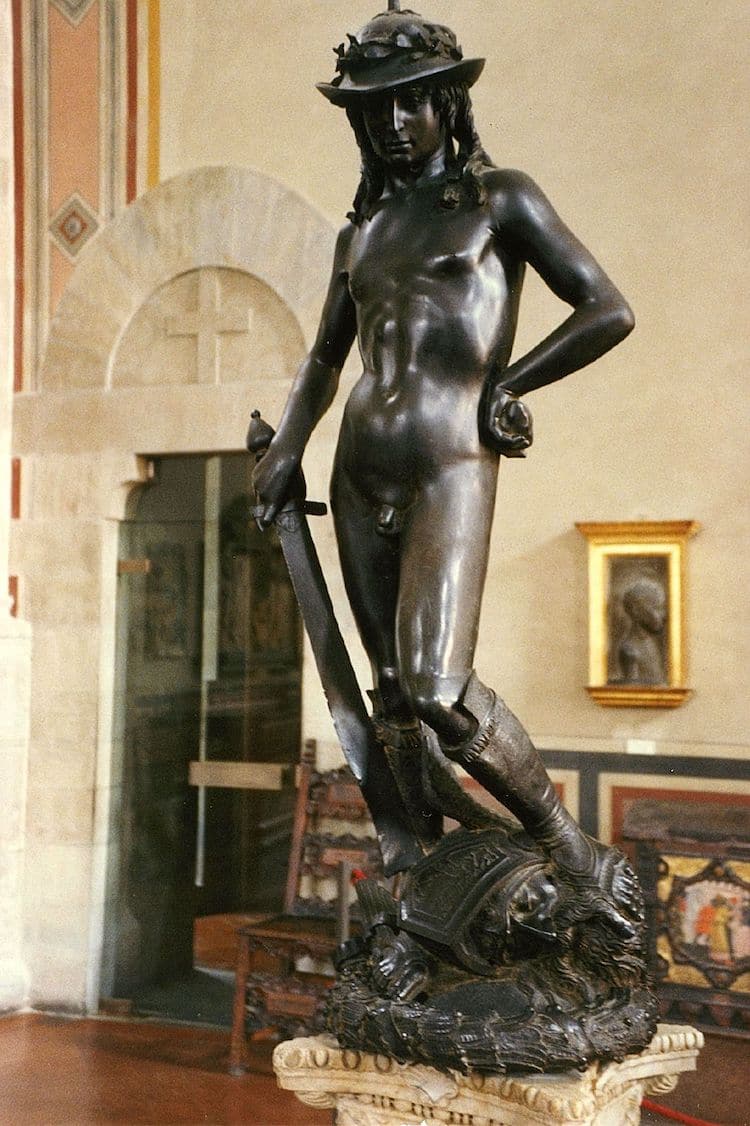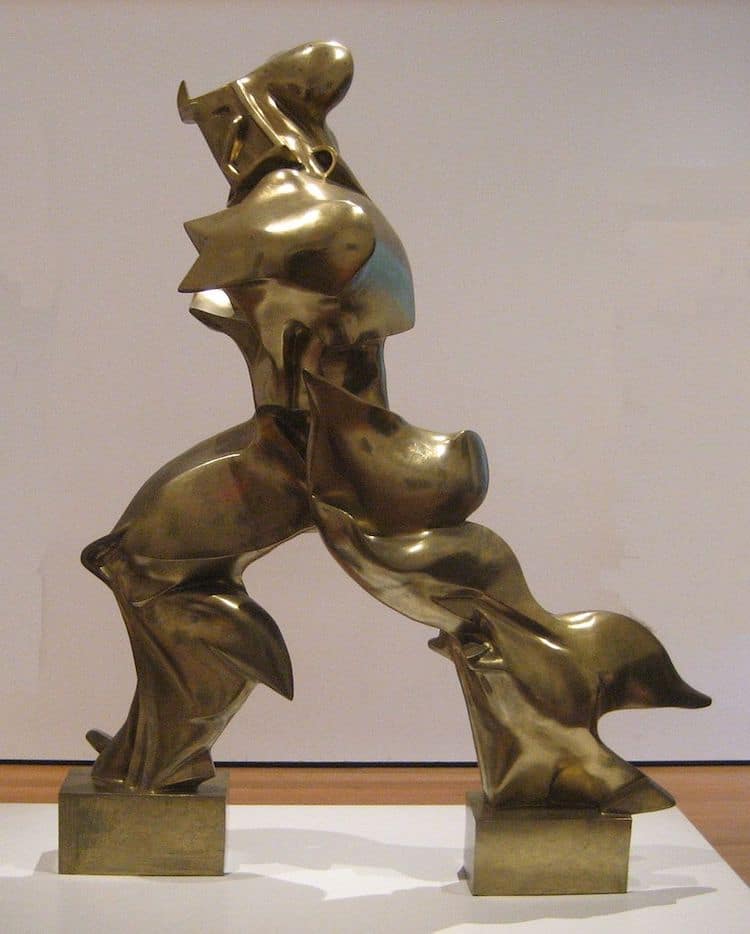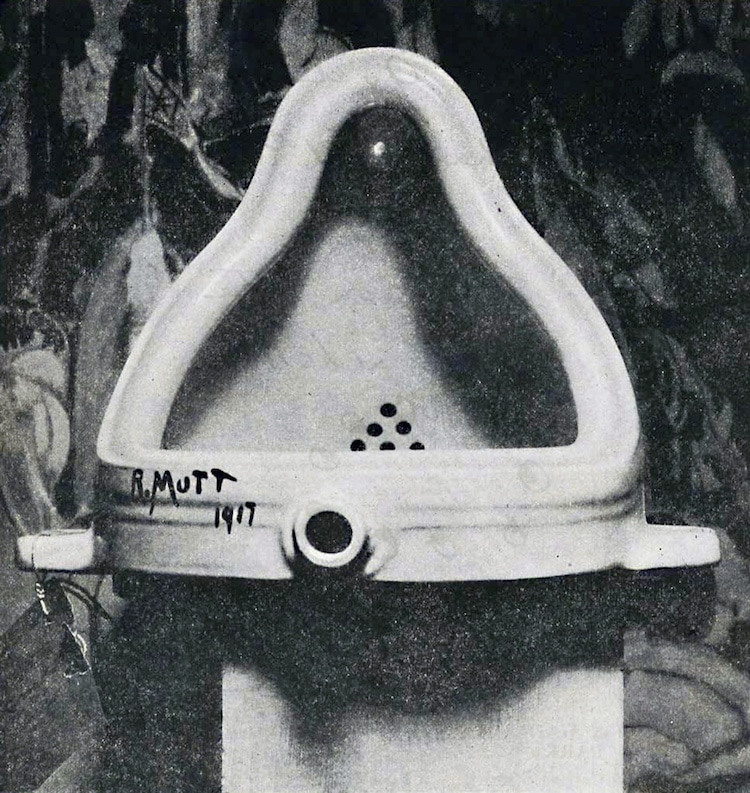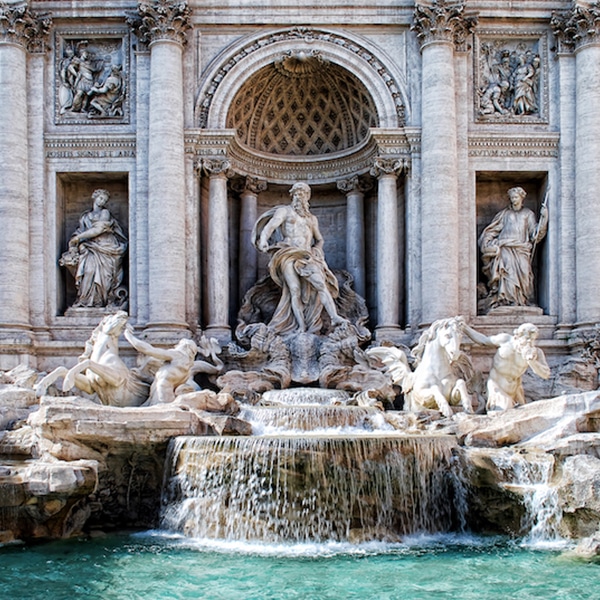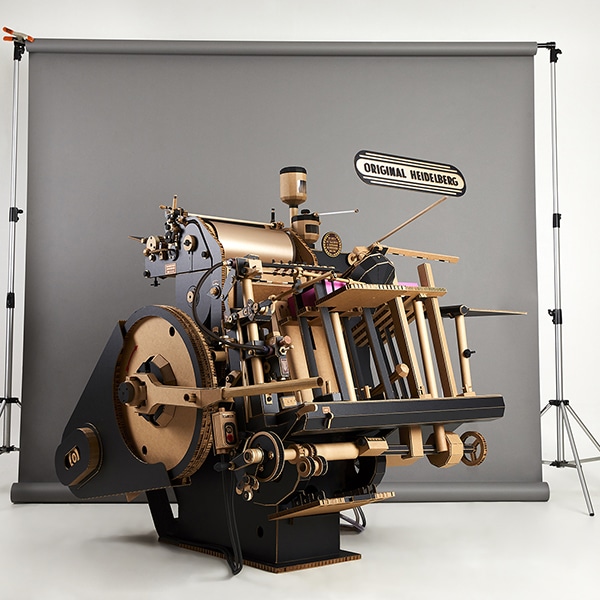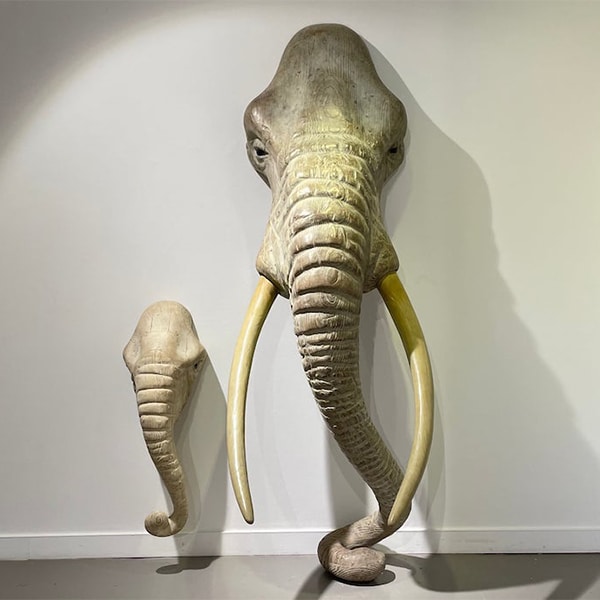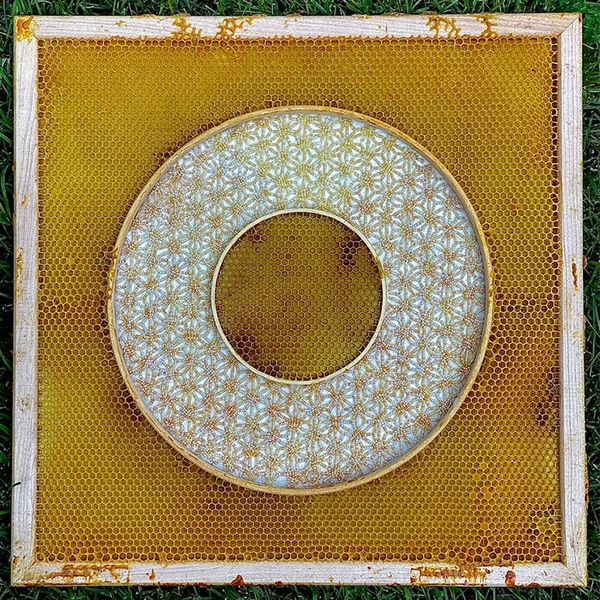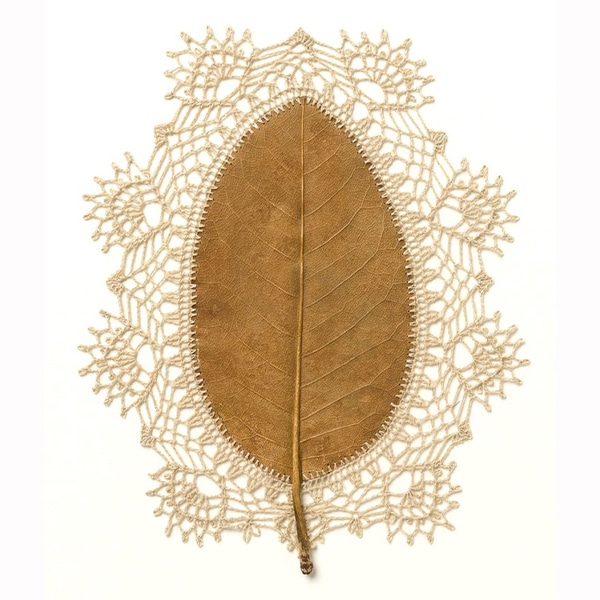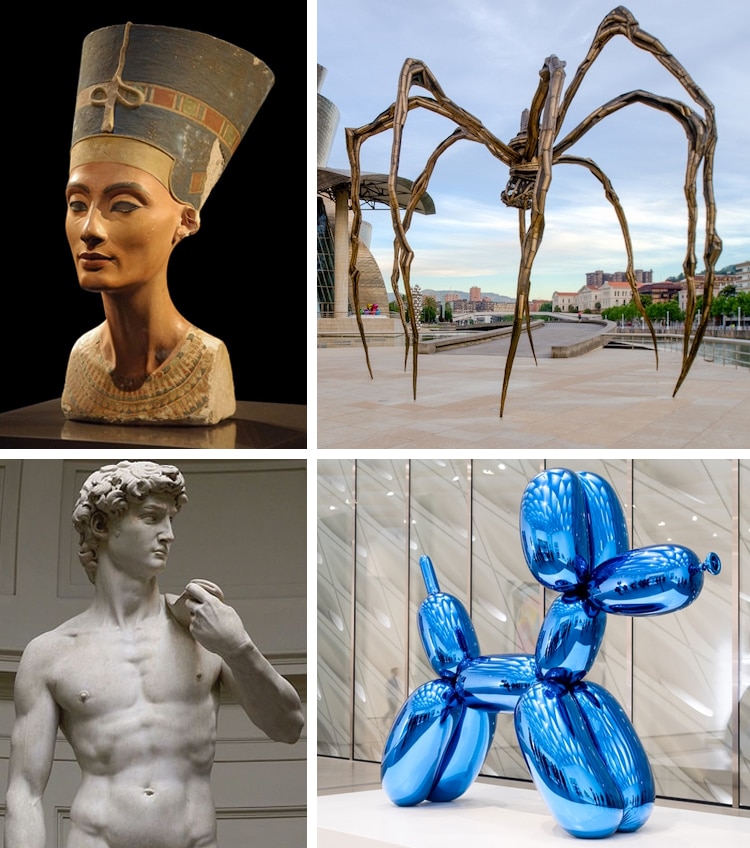
Working in three dimensions, sculptors throughout history have shaped marble, bronze, wood, and other materials into incredible forms. And from our earliest times, sculpture has been an important way to understand culture and society, whether from portrait busts of great leaders or symbolic renderings of ethical principles.
When you stop to consider famous sculptures through history, the list is endless. From the armless beauty of the Venus de Milo to the great army of terracotta warriors built to protect the Chinese Emperor, the function of ancient sculpture moves toward modernity through groundbreaking work by Duchamp. And yet, the classical is always present, whether it be through the iconically symbolic Statue of Liberty or Boccioni's early 20th-century sculptures taking cues from ancient Greek art.
We take a look at 18 famous sculptures through history to show the variety of art that has captured the public's imagination. Groundbreaking, beautiful, and often thought-provoking, these works have withstood the test of time.
18 famous sculptures that have become iconic pieces of history:
Venus of Willendorf (c. 30,000-20,000 BCE)
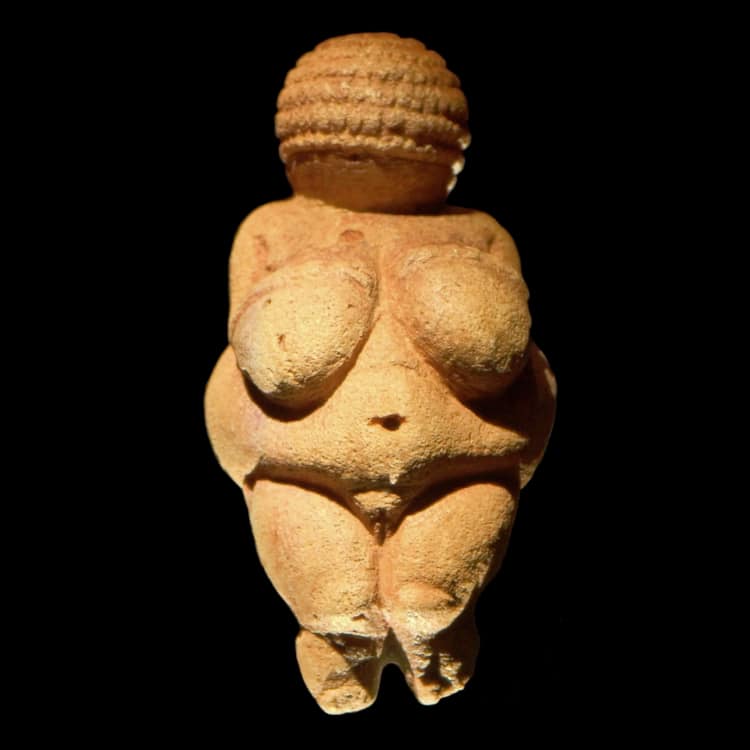
Photo: Wikimedia Commons GNU FDL
The Venus of Willendorf is a 4.4-inch-tall figurine made from limestone discovered in Willendorf, Austria. It is believed to have been crafted between 30,000 and 25,000 BCE, making it one of the world's oldest known works of art. Because of the figure's prominent breasts, rounded abdomen, and shapely hips, many researchers over time have concluded that the carving was intended to be a fertility statue, or “Venus figurine.”
Bust of Nefertiti by Thutmose (1345 BCE)
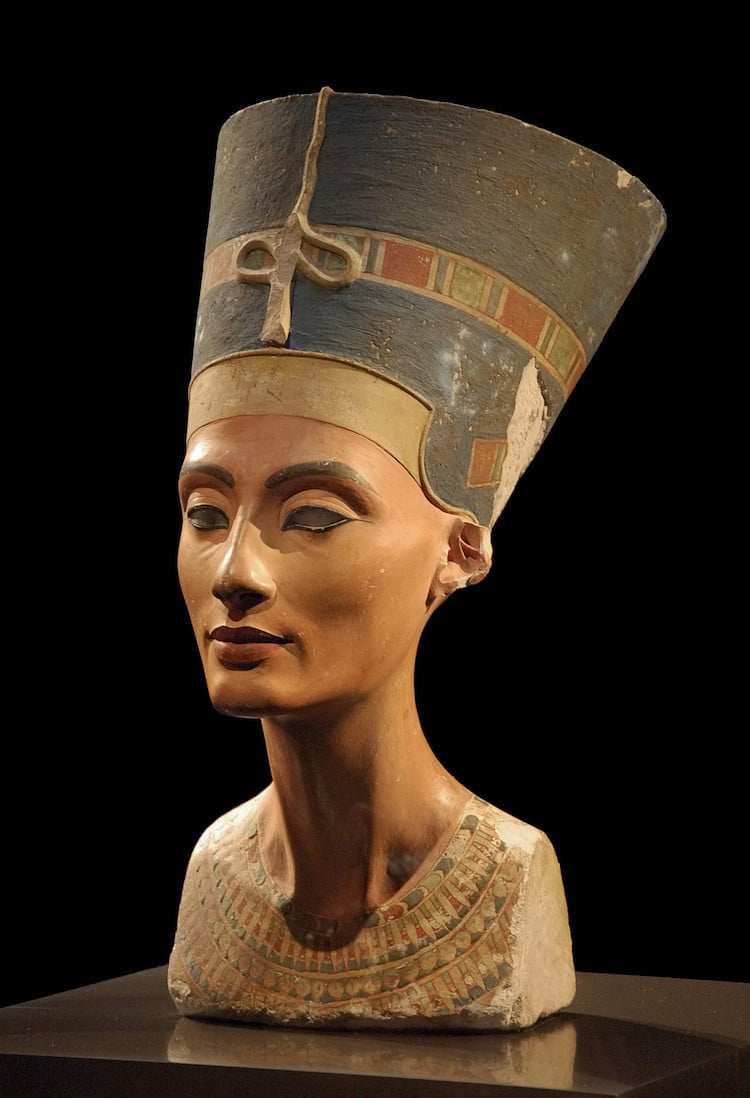
Photo: Philip Pikart / Shutterstock
This painted limestone bust, now in the Neues Museum in Berlin, is a beautiful portrait of Nefertiti, the Great Royal Wife of the Egyptian pharaoh Akhenaten. Found in the workshop of an artist named Thutmose, his iconic rendering made Nefertiti a symbol of ideal feminine beauty for centuries to come.
Terracotta Warriors (late 3rd century BCE)
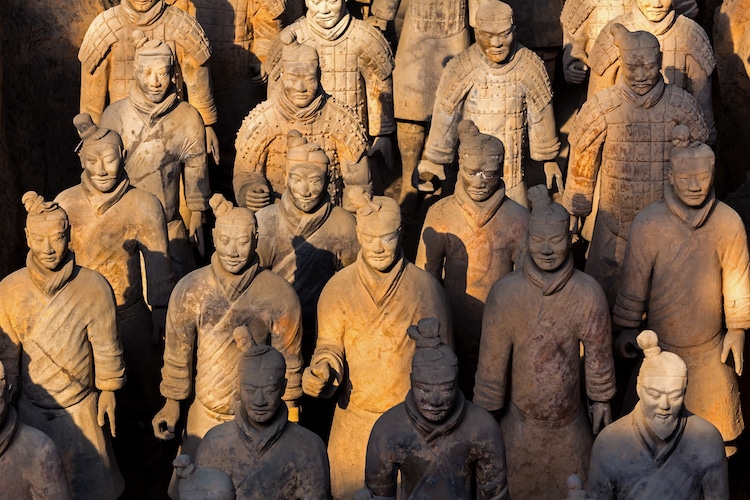
Photo: Bule Sky Studio / Shutterstock. READ MORE: Terracotta Daughters Bring Awareness to Gender Preferences in China
The terracotta warriors are a collection of statues in Xi'an, China, depicting the army of Qin Shi Huang, the first Emperor of China. Counted among the figures are 8,000 soldiers, 130 chariots, and 670 horses. The figures are an incredible example of funerary art, created to guard to Emperor in the afterlife. They were only discovered in 1974 when farmers digging a well happened upon them in a location almost 1 mile from the Emperor's tomb. Portions of the collection are often part of traveling exhibitions around the world and the mausoleum in Xi'an has been a World Heritage Site since 1987. The works have inspired everything from 3D sidewalk art to pizza dough sculptures.
Laocoön and His Sons (c. 323 BCE – 31 CE)

“Laocoon and His Sons” displayed in the Museo Pio Clementino of the Vatican Museums in Rome, Italy (Photo: IR Stone via Shutterstock)
Since its 16th century excavation, Laocoön and His Sons has attracted archaeologists and art lovers alike. This Hellenistic sculpture depicts three marble figures in an action-packed scene based on an ancient Greek myth. According to legend, Laocoön was a priest from Troy who—along with his two sons, Antiphantes and Thymbraeus—was attacked by sea serpents sent by a god. Although the original sculptor remains a mystery, the work is lauded for its technical mastery and emotional impact.
Nike of Samothrace (c.190 BCE)

Photo: muratart / Shutterstock
Located in the Louvre, the Winged Victory of Samothrace or Nike of Samothrace is an iconic example of Hellenistic Greek sculpture. Depicting Nike, the Greek goddess of victory, it is one of the few remaining Hellenistic sculptures that is a Greek original and not a later Roman copy. With her clothes clinging to her body, the goddess triumphantly moves forward as though on the prow of a ship leading troops to victory. One of the most famous sculptures in history, it would later influence Umberto Boccioni's Unique Forms of Continuity in Space.
Venus de Milo (c.130 BCE)
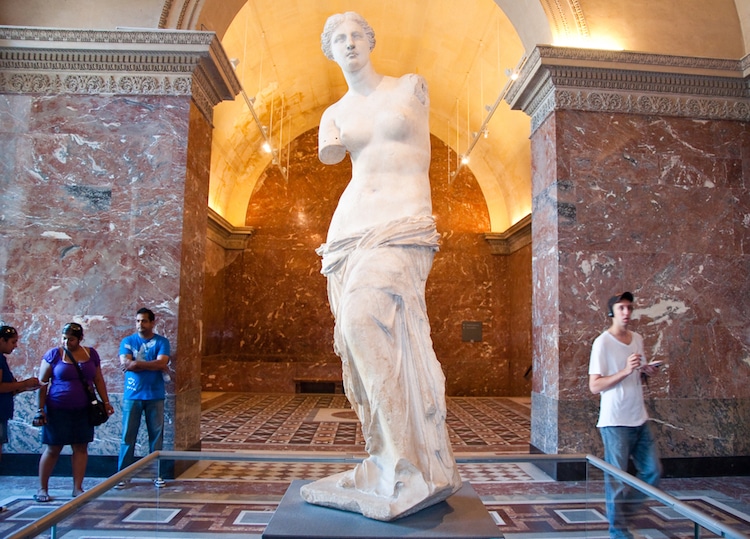
Photo: lornet / Shutterstock
Also located in the Louvre, the Venus de Milo is also known as the Aphrodite of Milos and is thought to depict Aphrodite, the Greek goddess of love. The marble sculpture stands 6 feet 8 inches tall and is known for its missing arms. As any limbs were in peril of breaking off over time, it's not uncommon for ancient sculpture to be missing their limbs. The world famous sculpture was found on the Greek island of Milos in 1820 by a peasant, who discovered it fractured into two pieces. The work has long influenced artists, including Dalí, who created the Venus de Milo with Drawers in 1936.
David by Donatello (1430-1440)
Almost 100 years before Michelangelo's David, Italian Renaissance sculptor Donatello created an iconic version of the Biblical tale. Cast in bronze, Donatello's David is younger and more contemplative, having just slain Goliath. In fact, Donatello cleverly uses Goliath's head and David's sword as supports for the structure. The sculpture caused a scandal at the time, as David is nude except for his boots, and was considered so naturalistic it was disturbing. The early Renaissance sculpture has the distinction of being both the first unsupported bronze cast sculpture, as well as the first freestanding male nude since antiquity.
David by Michelangelo (1501-1504)
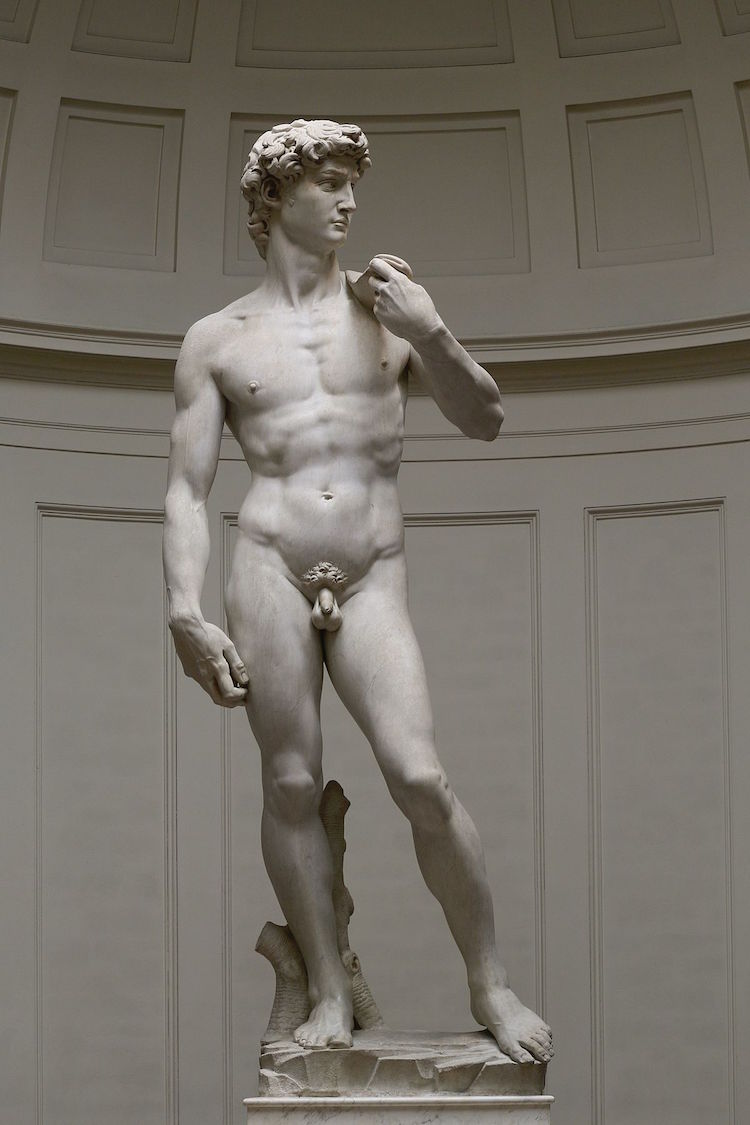
Michelangelo, “David,” 1501–1504 (Photo: Jörg Bittner Unna via Wikimedia Commons, CC BY-SA 3.0)
Originally commissioned for the roof of Florence's cathedral, Michelangelo was only 26 years old when he won the job. One of the most iconic sculptures in history, Michelangelo's oversized David is calm and collected, with his slingshot slung over his shoulder, confidently waiting to take on Goliath. Michelangelo's skill is demonstrated in his attention to detail, from the bulging veins in David's hand to the mastery of contrapposto in his pose.
The Rape of Proserpina by Gian Lorenzo Bernini (1621-1622)
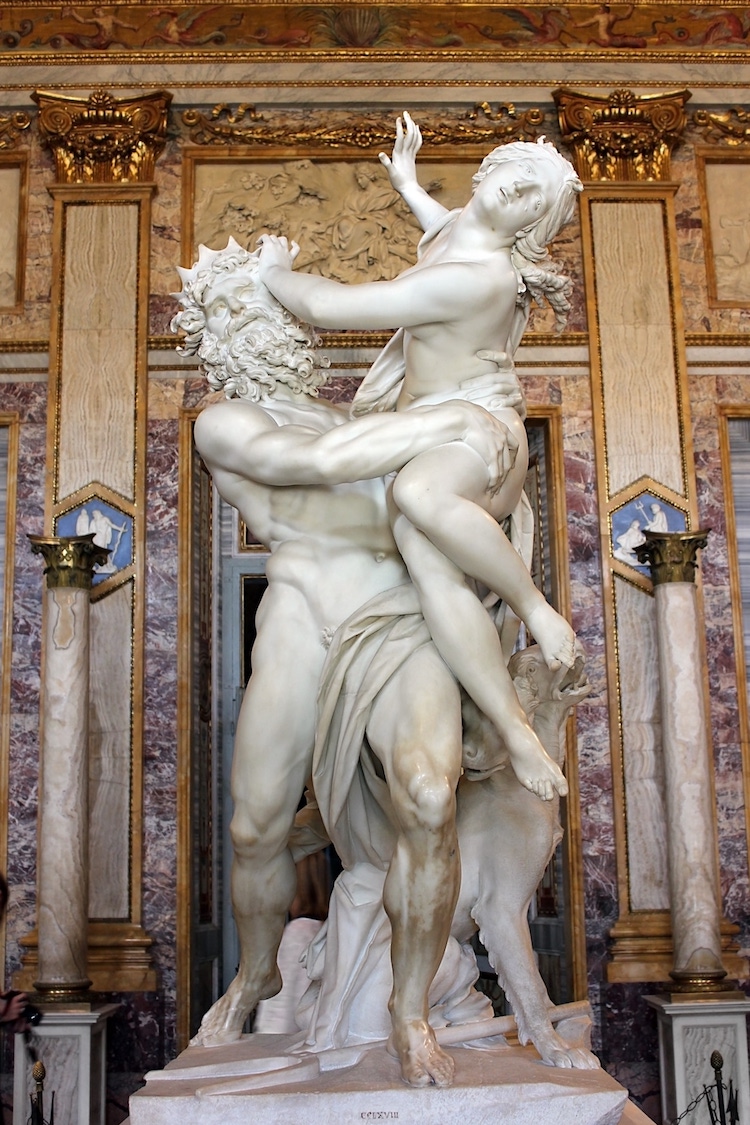
Photo: Stock Photos from irisphoto1/Shutterstock
The Baroque artist Bernini was only 23 years old when he began this marble sculpture, but it is still recognized as one of his most remarkable pieces. Based on an ancient Greek myth, The Rape of Prosperina depicts the god Hades capturing the daughter of Zeus, Proserpina. Bernini carved the two figures out of Carrara marble, transforming the stone to resemble supple skin. Its elaborate composition and theatrical sense of drama make it an archetype of Baroque art.
Statue of Liberty, designed by Frédéric Auguste Bartholdi and built by Gustave Eiffel (1876-1886)

Photo: byvalet / Shutterstock
Known to symbolize freedom in the United States, the Statue of Liberty is a copper statue that was a gift from the French government and shows a robbed figure representing the Roman goddess Libertas. In her arms, she holds a tablet with the date of the US Declaration of Independence. The idea for the gift was dreamed up by Édouard René de Laboulaye, president of the French Anti-Slavery Society, to celebrate and honor the Union victory in the Civil War and the abolition of slavery. The green patina, now associated with the celebrated sculpture, only appeared after 1900 as the copper oxidized.
The Thinker by Rodin (1880, cast in 1904)
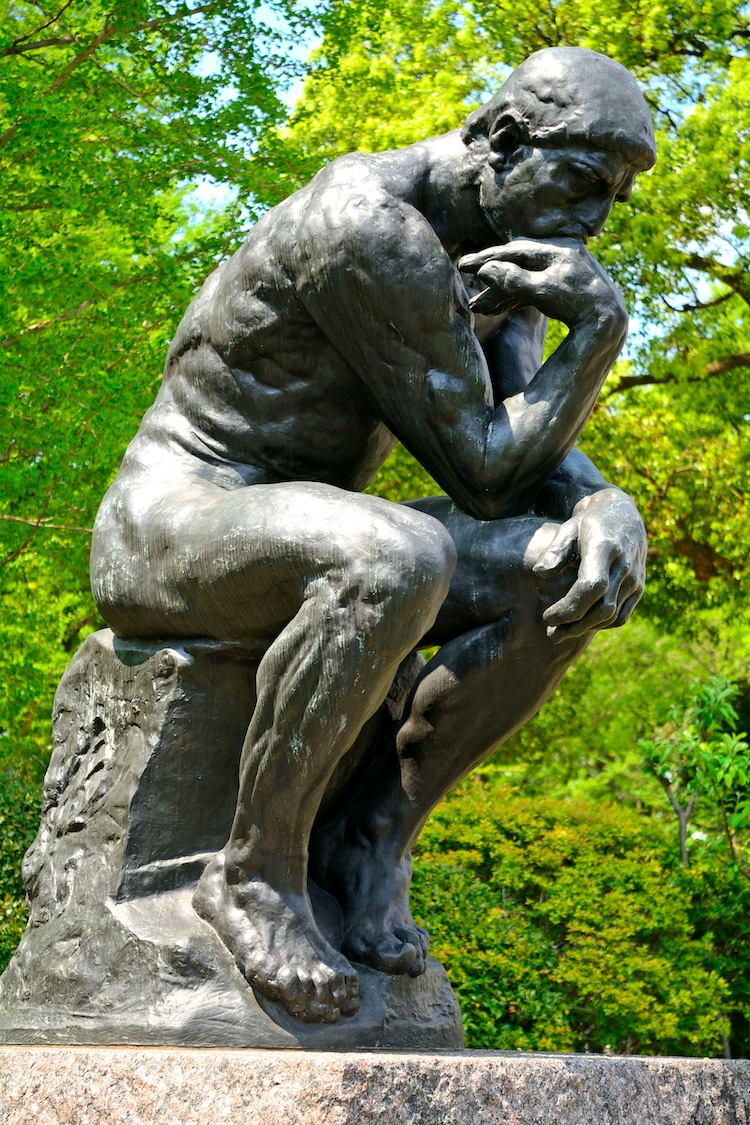
Photo: Attila JANDI / Shutterstock
This masterpiece by French sculptor Auguste Rodin was originally titled The Poet and was actually meant to be part of a larger composition called The Gates of Hell. The Thinker was actually retitled by foundry workers who found similarities with Michelangelo's sculpture Il Penseroso (The Thinker) and became an independent work of art. The celebrated sculpture has been cast multiple times, with 28 full figure castings, though many not made during Rodin's lifetime. The Musée Rodin has the honor of displaying the first full-scale cast of this figure, often used to represent philosophy.
Unique Forms of Continuity in Space by Umberto Boccioni (1913, cast in 1931)
Though he died at 33, Italian artist Umberto Boccioni had an enormous impact on the art world. Helping shape the aesthetics of the Futurist movement, he was interested in the dynamism of form and deconstructing solid shapes. Now located in New York's MoMA, his Unique Forms of Continuity in Space is the apex of his ideas. Suggesting a windswept movement, the sleek bronze at once embraces modern machinery, yet is also a nod to the ancient past. Bursting with energy, it fulfills Boccioni's wish, “Let us fling open the figure and let it incorporate within itself whatever may surround it.”
Fountain by Duchamp (1917)
Marcel Duchamp turned the artwork on its ear with his readymade Fountain, a porcelain urinal. The Dada artist first submitted the work to the Society of Independent Artists for an exhibition in New York, but it was rejected. The original, then photographed by Alfred Stieglitz in this studio, is now lost, but Duchamp commissioned numerous replicas in the 1960s that still exist. With this groundbreaking work, Duchamp challenges us to think about whether or not traditional concepts of craftsmanship or aesthetics are important when considering something art.
Lincoln Memorial, designed by Daniel Chester French & carved by the Piccirilli Brothers (1920)
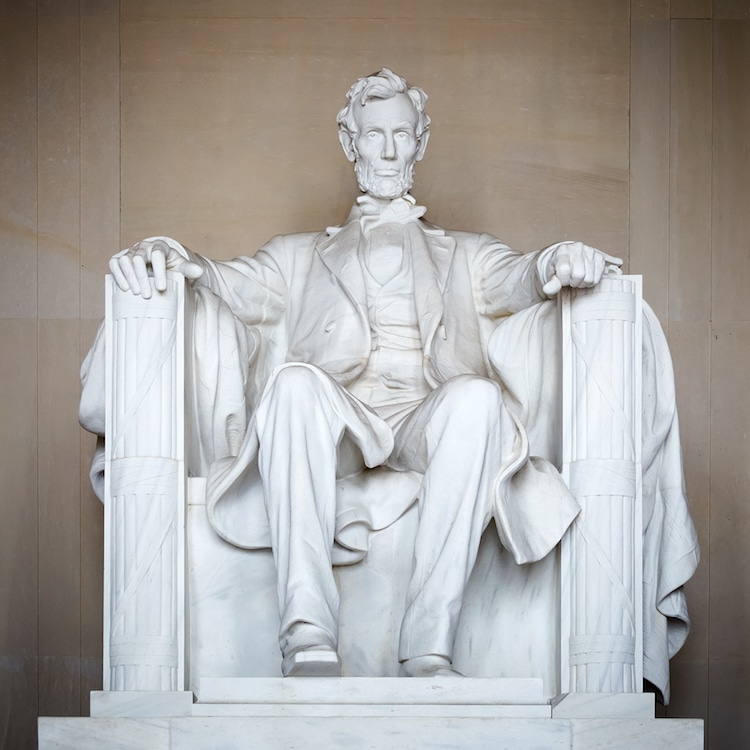
Photo: S. Borisov / Shutterstock
Originally designed to be 10 feet tall, this marble sculpture of the 16th president of the United States was enlarged to 19 feet from head to foot. It depicts Lincoln in contemplation, sitting inside the majestic temple structure that forms the rest of the Lincoln Memorial. From the 1930s, the space has gained importance as a symbol of race relations in the United States.
Bird in Space by Constantin Brancusi (1923)
Bird in Space is a series of sculptures by Romanian artist Constantin Brancusi, the first being cast in 1923. Seven are made of marble and nine are cast in bronze. Rather than focus on a physical depiction of a bird, Brancusi wished to depict a feeling of movement. Stripping the animal of its wings and feathers, and elongating its beak and midsection, the sleek form emerges. A masterclass in symmetry and harmony, the sculpture set a record in 2005, when it was sold at auction for $23.5 million. At the time, it was a record high for a piece of sculpture. Currently, the original marble version is at the Metropolitan Museum of Art in New York.
Balloon Dog by Jeff Koons (1994-2000)

Photo: Hayk_Shalunts / Shutterstock READ MORE: Jeff Koons Debuts a 45-Foot-Tall Inflatable Ballerina at NYC’s Rockefeller Center
Love him or hate him, Jeff Koons is responsible for some of the most memorable art of the 20th century. In 2013, his Balloon Dog (Orange), made of stainless steel with a transparent coating, set a record for a living artist when it sold at Christie's for $58.4 million in 2013. Part of a series that transforms a playful child's party favor into a monumental sculpture, Koons also created other versions in blue, magenta, red, and yellow.
Maman by Louise Bourgeois (1999, cast in 2001)
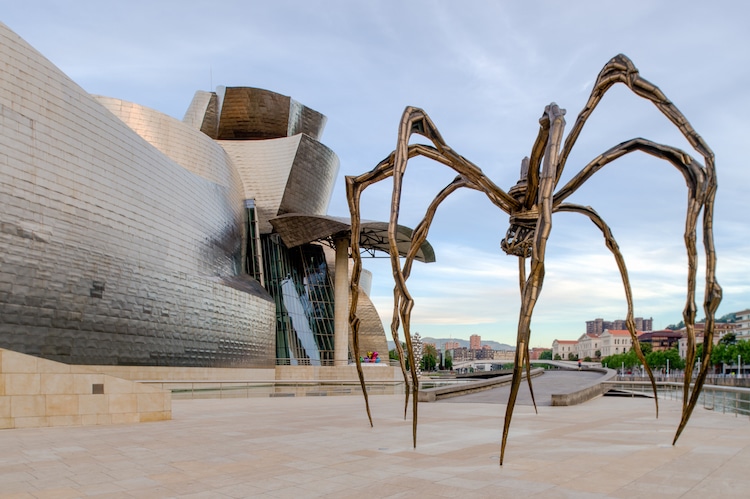
Photo: Rudy Mareel / Shutterstock
Standing over 30 feet high, Louise Bourgeois‘ Maman at the Guggenheim in Bilbao is a masterpiece that marries physical and psychological power. Impressive in its size, the large spidery sculpture is associated with the artist's own mother, who worked repairing tapestries. We see the spider, protecting fiercely her sac of 26 marble eggs, provokes fear through her size, but vulnerability through the stilt-like legs, which could seemingly topple at any moment. The spider is a recurring theme in Bourgeois' work, first featuring in drawings in 1947 and continuing throughout her career, including the 1996 sculpture Spider.
Cloud Gate by Anish Kapoor (2004)
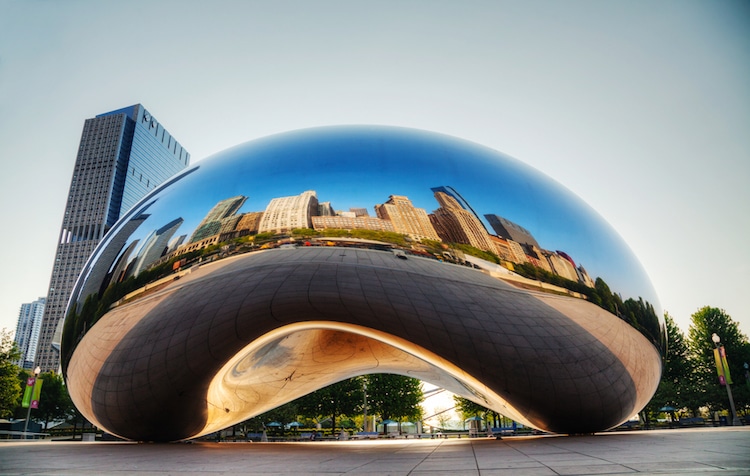
Photo: photo.ua / Shutterstock . READ MORE: 20+ Places to Find Spectacular Public Art Around the U.S.
When he's not stirring controversy by exclusively licensing the blackest black paint on the planet, Anish Kapoor is known for his headline-making sculpture. One of his most well-known pieces, Cloud Gate in Chicago's Millenium Park, was inspired by liquid mercury. Kapoor won the commission after submitting to a design contest, and though the design was controversial—many believed the seamless design was impossible to construct and upkeep—it's now become a beloved part of the city.
This article has been edited and updated.
Related Articles:
Art History: What is Line Art?
Art History: The Evolution of Hypnotic Kinetic Sculptures
Exploring the Cutting-Edge History and Evolution of Collage Art
2,000+ Years of Dogs in Art, From Ancient Mosaics to Instagram Selfies
